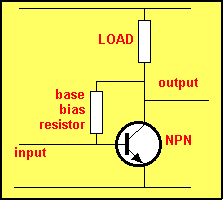|
|
BASIC
ELECTRONICS COURSE
Page 41  INDEX
INDEX

TEST 6
More
questions along the same lines as the previous two tests, but this time we
introduce some new topics that may not have been covered in the notes. The
advantage of the layout in this test is the way the answer can be hidden
until required. This way you can write your answers without being
distracted by the answer we have provided.
This highlights just one of the advantages of presenting information via
the computer and with the pages being on the web, the whole world has
access to the information.
Just imagine if every subject was presented in a
progressive manner such as this! Not only would we learn 10 times faster
but the information could be more
diverse, more practical and more up-to-date!
Now, back to the topic in question.
We have attempted to animate some of the circuits so you can get a visualisation
of how they are operating. Obviously an animation is not exactly how the
circuit is behaving, but it's the closest we can get. It is essential for you to "see"
circuits operating so you can design and service them.
|
Question 1: A
Common-Emitter stage is shown with a base-bias resistor and LOAD resistor. The
input and output lines are also shown. What happens to the voltage on the
collector when the resistance of the base-bias resistor is REDUCED: 
|
|
Question 2: What
happens to the collector in the common-emitter circuit when the LOAD resistor is REDUCED :

|
|
Question 3: Why
do we put a
capacitor on the input line?

|
|
|
Question 4: Name
the type of circuit produced when a coil and capacitor are placed in parallel:
| |
|
Question 5:
Draw
an NPN emitter-follower being pulled-up with a base resistor. Describe what
this resistor is doing. Use the components provided: (Click and drag the items
to create the circuit)
|
Question 6:
Draw a TANK circuit
using the following components. Click and drag the items to create the circuit:
|
|
Question 7: Draw two
capacitor-coupled, self-biased common-emitter stages with capacitor input and output.
|
|
Question 8: Draw
an emitter-follower stage.
|
|
NEXT

|